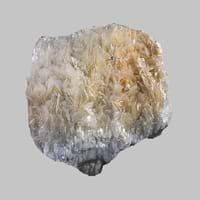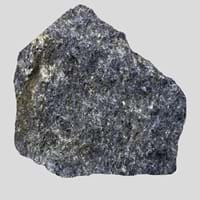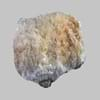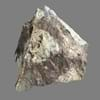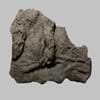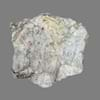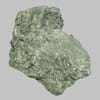Definition
Talc carbonate is nothing but a rock sequence or a mineral composition found in metamorphic ultramafic rocks.
Blueschist is a metamorphic rock which is generally blue in color and is formed under conditions of high pressure and low temperature
Origin
China, USA, Middle east
USA
Discoverer
Unknown
Edgar Bailey
Etymology
From medieval Latin, talcum
From French schiste, Greek skhistos i.e. split
Class
Metamorphic Rocks
Metamorphic Rocks
Sub-Class
Durable Rock, Soft Rock
Durable Rock, Medium Hardness Rock
Group
Not Applicable
Not Applicable
Other Categories
Fine Grained Rock, Opaque Rock
Fine Grained Rock, Medium Grained Rock, Opaque Rock
Texture
Very Soft
Foliated
Color
Colourless, Grey, White
Blue, Bluish - Grey, Purple, Shades of Blue
Durability
Durable
Durable
Appearance
Soft
Dull and Banded
Interior Uses
Decorative Aggregates, Interior Decoration
Floor Tiles, Flooring, Homes, Hotels, Kitchens
Exterior Uses
Garden Decoration
Garden Decoration, Office Buildings
Other Architectural Uses
Powder
Not Yet Used
Construction Industry
Source of calcium
As Dimension Stone, Cobblestones, Rail Track Ballast, Roadstone
Medical Industry
Taken as a Supplement for Calcium or Magnesium
Not Yet Used
Antiquity Uses
Artifacts, Jewellery, Monuments, Sculpture, Small Figurines
Artifacts, Monuments, Sculpture
Commercial Uses
Manufacturing of baby powder
Cemetery Markers, Commemorative Tablets, Creating Artwork, Curling, Tombstones
Types
Not Available
Not Available
Features
Easily splits into thin plates, Generally rough to touch, Host Rock for Lead
Has High structural resistance against erosion and climate, Very fine grained rock
Archaeological Significance
Famous Monuments
Data Not Available
Data Not Available
Famous Sculptures
Data Not Available
Data Not Available
Petroglyphs
Not Used
Used
Formation
Due to change in environmental conditions, rocks are heated and pressurized deep inside the Earth's surface. Talc Carbonate is formed from the extreme heat caused by magma or by the intense collisions and friction of tectonic plates.
Blueschist forms due to the metamorphism of basalt and other rocks with similar composition at high pressures and low temperatures and approximately corresponding to a depth of 15 to 30 kilometers and 200 to 500 °C.
Mineral Content
Carbonate, Chlorite, Magnesium
Albite, Chlorite, Epidote, Garnet, Glaucophane, Lawsonite, Muscovite or Illite, Quartz
Compound Content
CaO, Carbon Dioxide, MgO
Aluminium Oxide, CaO, Iron(III) Oxide, FeO, Potassium Oxide, MgO, MnO, Sodium Oxide, Phosphorus Pentoxide, Silicon Dioxide, Titanium Dioxide
Types of Metamorphism
Burial Metamorphism, Cataclastic Metamorphism, Contact Metamorphism, Hydrothermal Metamorphism, Impact Metamorphism
Not Applicable
Types of Weathering
Not Applicable
Mechanical Weathering
Types of Erosion
Not Applicable
Chemical Erosion, Coastal Erosion, Water Erosion, Wind Erosion
Grain Size
Fine Grained
Fine to Medium Grained
Streak
White
White to Grey
Porosity
Less Porous
Highly Porous
Compressive Strength
Not Available
Specific Gravity
2.86
3-3.2
Transparency
Translucent
Opaque
Density
2.8-2.9 g/cm3
2.8-2.9 g/cm3
Specific Heat Capacity
Not Available
Resistance
Heat Resistant, Wear Resistant
Impact Resistant, Pressure Resistant
Deposits in Eastern Continents
Asia
Not Yet Found
Japan, Turkey
Africa
Ethiopia, Ghana, Western Africa
Egypt, Ethiopia, South Africa
Europe
England
France, Greece, Iceland
Others
Not Yet Found
Not Yet Found
Deposits in Western Continents
North America
Canada, USA
USA
South America
Argentina, Bolivia, Uruguay
Not Yet Found
Deposits in Oceania Continent
Australia
Central Australia, South Australia, Western Australia
New Zealand
All about Talc carbonate and Blueschist Properties
Know all about Talc carbonate and Blueschist properties here. All properties of rocks are important as they define the type of rock and its application. Talc carbonate and Blueschist belong to Metamorphic Rocks.Texture of Talc carbonate is Very Soft whereas that of Blueschist is Foliated. Talc carbonate appears Soft and Blueschist appears Dull and Banded. The luster of Talc carbonate is pearly while that of Blueschist is dull. Talc carbonate is available in colourless, grey, white colors whereas Blueschist is available in blue, bluish - grey, purple, shades of blue colors. The commercial uses of Talc carbonate are manufacturing of baby powder and that of Blueschist are cemetery markers, commemorative tablets, creating artwork, curling, tombstones.
